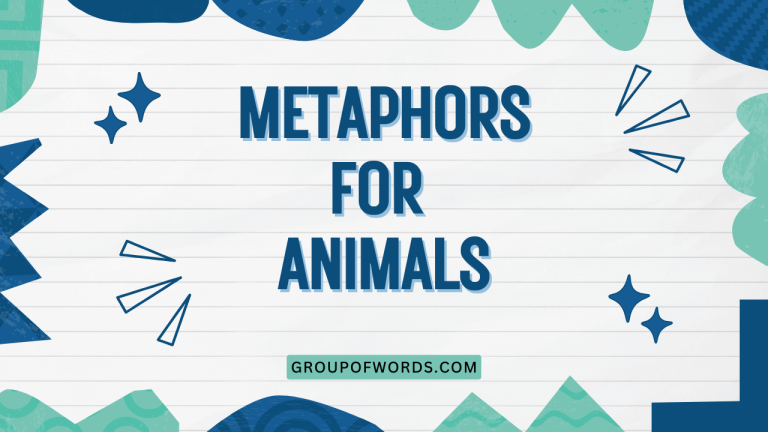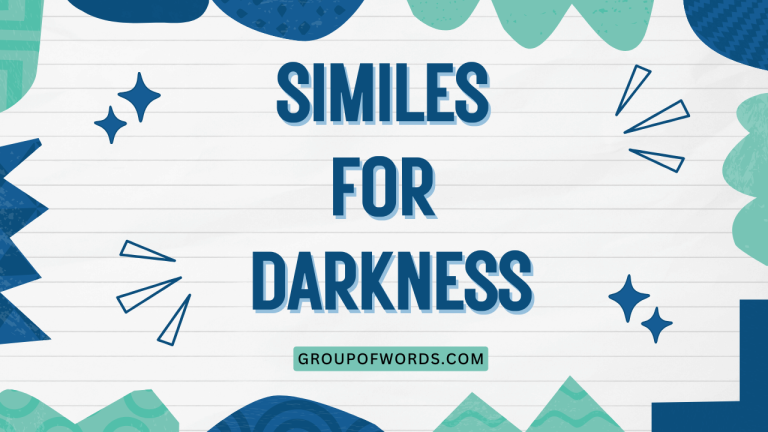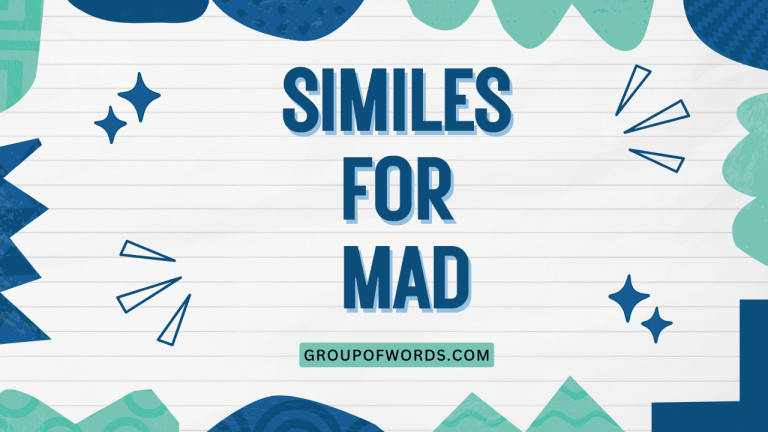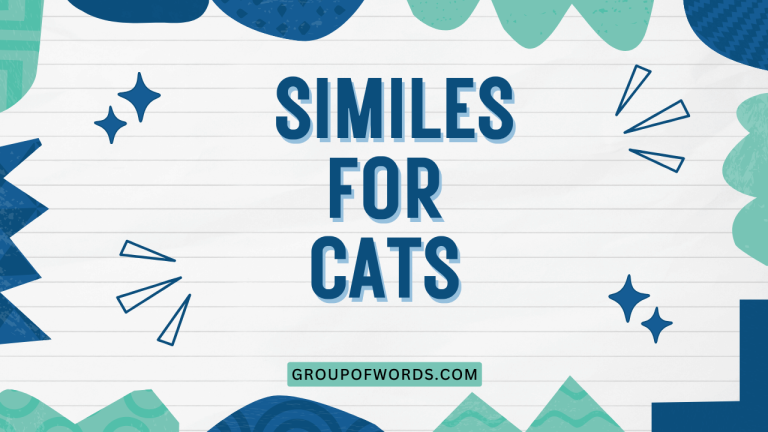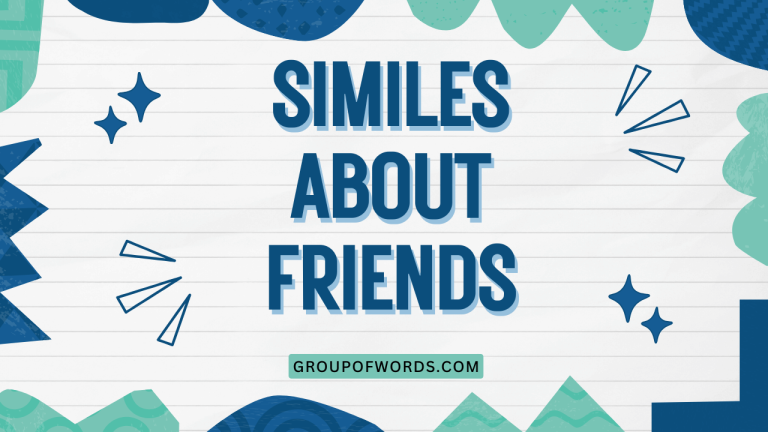Metaphors for Being Happy: A Comprehensive Guide
Understanding metaphors is crucial for mastering English, as they add depth and color to our language. Metaphors are especially prevalent when describing abstract concepts like happiness.
This article explores various metaphors used to express happiness, providing detailed explanations, examples, and practical exercises to enhance your comprehension. Whether you are an English language learner or simply looking to enrich your vocabulary, this guide will help you recognize, interpret, and use happiness metaphors effectively.
This article is structured to progressively build your understanding of happiness metaphors. We begin with a clear definition and then delve into different types, structural elements, and usage rules.
Numerous examples are provided to illustrate each concept, followed by practice exercises to reinforce your learning. Finally, we address common mistakes and answer frequently asked questions to ensure a thorough grasp of the topic.
Table of Contents
- Definition of Metaphor and Happiness
- Structural Breakdown of Happiness Metaphors
- Types of Happiness Metaphors
- Examples of Happiness Metaphors
- Usage Rules for Happiness Metaphors
- Common Mistakes with Happiness Metaphors
- Practice Exercises
- Advanced Topics: Nuances and Cultural Variations
- Frequently Asked Questions
- Conclusion
Definition of Metaphor and Happiness
A metaphor is a figure of speech that directly compares two unrelated things, suggesting a likeness between them. It asserts that one thing is another, not literally, but figuratively. The purpose of a metaphor is to create a vivid image or convey a deeper meaning by transferring qualities from one concept to another. Unlike similes, which use “like” or “as” to make comparisons, metaphors make a direct assertion of similarity.
Happiness, on the other hand, is an emotional state characterized by feelings of joy, contentment, and well-being. It is a subjective experience that can be influenced by various factors, including personal relationships, achievements, and circumstances. Because happiness is an abstract emotion, it is often described using metaphors to make it more tangible and relatable.
Metaphors for happiness help us understand and communicate this complex emotion by associating it with concrete experiences and objects. They allow us to express the intensity, duration, and nature of our happiness in a more nuanced and creative way.
By understanding these metaphors, we can better appreciate the richness and complexity of human emotion.
Structural Breakdown of Happiness Metaphors
The structure of a happiness metaphor typically involves two key elements: the tenor and the vehicle. The tenor is the subject being described (in this case, happiness), and the vehicle is the object or concept used to describe it. The vehicle lends its qualities to the tenor, creating a metaphorical meaning.
For example, in the metaphor “Happiness is a warm blanket,” happiness (the tenor) is being compared to a warm blanket (the vehicle). The qualities of warmth, comfort, and security associated with a warm blanket are transferred to the concept of happiness, suggesting that happiness provides a similar sense of comfort and well-being.
Another important aspect of understanding happiness metaphors is recognizing the ground, which is the shared characteristic or commonality between the tenor and the vehicle. In the example above, the ground is the feeling of comfort and security. Identifying the ground is essential for interpreting the meaning of the metaphor accurately.
Metaphors can range from simple, one-word comparisons to more extended, elaborate descriptions. The complexity of the metaphor often depends on the context and the desired effect.
Understanding these structural elements allows us to deconstruct and interpret metaphors more effectively.
Types of Happiness Metaphors
Happiness metaphors can be categorized based on the types of images and concepts they evoke. Here are several common categories:
Light and Brightness Metaphors
These metaphors associate happiness with light, brightness, and illumination. They often convey a sense of clarity, hope, and positivity.
Examples include “Happiness is sunshine,” “She’s radiating joy,” and “His smile lit up the room.” These metaphors use the inherent qualities of light to represent the uplifting and illuminating nature of happiness.
Warmth and Comfort Metaphors
Warmth metaphors connect happiness with feelings of comfort, coziness, and security. They suggest that happiness provides a sense of well-being and emotional support.
Examples include “Happiness is a warm embrace,” “He basked in the warmth of her smile,” and “Their love was a comforting fire.” The feeling of warmth is directly linked to the comforting sensation of happiness.
Flight and Elevation Metaphors
These metaphors use the imagery of flight, elevation, and lightness to describe happiness. They convey a sense of freedom, exhilaration, and transcendence.
Examples include “She was floating on air,” “His spirits soared,” and “Happiness lifted her up.” The act of flying or rising above symbolizes overcoming obstacles and experiencing joy.
Sweetness and Taste Metaphors
Sweetness metaphors associate happiness with pleasant tastes and flavors. They suggest that happiness is a delightful and satisfying experience.
Examples include “Happiness is a piece of cake,” “Life is sweet,” and “His words were like honey.” The pleasurable sensation of tasting something sweet is used to represent the delightful nature of happiness.
Growth and Blooming Metaphors
These metaphors use the imagery of growth, blooming, and flourishing to describe happiness. They convey a sense of vitality, development, and fulfillment.
Examples include “Happiness blossomed within her,” “He was thriving on joy,” and “Their love grew stronger each day.” The natural process of growth and blooming symbolizes the development and flourishing of happiness.
Possession Metaphors
Possession metaphors describe happiness as something that can be owned or held. They often emphasize the security and control associated with happiness.
Examples include “She held happiness in her hands,” “He clutched onto joy,” and “They had a wealth of happiness.” The concept of ownership highlights the feeling of security and control.
Journey Metaphors
Journey metaphors portray happiness as a destination or a path. They suggest that happiness is a process that requires effort and perseverance.
Examples include “Happiness is a journey, not a destination,” “He found happiness along the way,” and “Their path was paved with joy.” The idea of a journey emphasizes the ongoing and evolving nature of happiness.
Examples of Happiness Metaphors
This section provides extensive examples of happiness metaphors, organized by the categories discussed above. These examples illustrate how different images and concepts can be used to express the multifaceted nature of happiness.
The following table presents examples of Light and Brightness Metaphors:
| Metaphor | Explanation |
|---|---|
| Happiness is sunshine on a cloudy day. | Happiness brightens and warms even the most difficult situations. |
| Her smile was a ray of light. | Her smile brought joy and hope. |
| He radiated happiness. | He exuded joy and positivity. |
| Joy illuminated her face. | Her face glowed with happiness. |
| Their laughter sparkled like sunlight on water. | Their laughter was bright and cheerful. |
| Happiness is a beacon in the night. | Happiness guides and inspires during dark times. |
| His eyes shone with glee. | His eyes reflected his happiness. |
| She was a shining example of joy. | She perfectly embodied happiness. |
| Their love was a bright flame. | Their love was passionate and joyful. |
| The day was bathed in happiness. | The day was filled with joy. |
| His success cast a glow of happiness over his family. | His success brought joy to his family. |
| She was a star, radiating happiness to everyone around her. | She spread joy to those near her. |
| Their friendship was a bright spot in a difficult time. | Their friendship provided joy and support. |
| His optimism was a light in the darkness. | His optimism brought hope. |
| Her happiness was contagious, like sunshine spreading across a field. | Her happiness affected those around her positively. |
| The news filled their hearts with light. | The news brought them joy. |
| His presence lit up the room. | His presence brought joy to the room. |
| She sparkled with happiness. | She was visibly joyful. |
| Their future looked bright with happiness. | Their future promised joy and success. |
| He was a lighthouse of happiness for his friends. | He guided and supported his friends with his joy. |
| The memory of that day shone brightly in her mind. | The memory brought her joy. |
| Her spirit was radiant with joy. | She exuded happiness. |
| Their shared laughter was like a burst of sunlight. | Their laughter was sudden and joyful. |
The following table showcases examples of Warmth and Comfort Metaphors:
| Metaphor | Explanation |
|---|---|
| Happiness is a warm blanket on a cold night. | Happiness provides comfort and security. |
| Her love was a comforting fire. | Her love provided warmth and security. |
| He basked in the warmth of her smile. | He enjoyed the comfort and joy of her smile. |
| Their friendship was a cozy refuge. | Their friendship provided comfort and safety. |
| Happiness is a gentle hug. | Happiness provides comfort and reassurance. |
| His words were like a warm embrace. | His words provided comfort and support. |
| She found solace in the warmth of their family. | She found comfort and peace in her family. |
| Their laughter was a comforting melody. | Their laughter provided comfort and joy. |
| Happiness is a cup of hot cocoa on a winter day. | Happiness provides warmth and satisfaction. |
| He felt the warmth of contentment spread through him. | He experienced a comforting feeling of satisfaction. |
| Their love was a warm embrace on a chilly day. | Their love was comforting and reassuring. |
| She found solace in the warmth of his presence. | She felt comforted by his presence. |
| His words were a warm blanket, shielding her from the cold. | His words provided comfort and protection. |
| Their friendship was a cozy fireplace, always burning bright. | Their friendship was a constant source of warmth and comfort. |
| Happiness is a gentle breeze on a hot summer day. | Happiness is refreshing and comforting. |
| He felt the warmth of gratitude fill his heart. | He experienced a comforting feeling of thankfulness. |
| Their laughter was a warm, comforting sound. | Their laughter provided a sense of ease and joy. |
| She found comfort in the warmth of their shared memories. | She felt comforted by remembering happy times together. |
| His presence was like a warm fire, drawing everyone closer. | His presence was comforting and inviting. |
| Their love was a comforting shelter from the storm. | Their love provided safety and security during difficult times. |
| Happiness is a soft, warm puppy. | Happiness is comforting and joyful. |
| He felt the warmth of understanding in her eyes. | He felt comforted by her understanding. |
| Their friendship was a warm hand in the darkness. | Their friendship provided comfort and support in difficult times. |
The following table illustrates examples of Flight and Elevation Metaphors:
| Metaphor | Explanation |
|---|---|
| She was floating on air after receiving the good news. | She felt extremely happy and light. |
| His spirits soared when he heard the music. | He felt uplifted and joyful. |
| Happiness lifted her up. | Happiness made her feel elevated and joyful. |
| He felt like he was walking on clouds. | He felt extremely happy and light. |
| Their joy took flight. | Their joy was unrestrained and exuberant. |
| She was carried away by happiness. | She was overwhelmed with joy. |
| His heart took wing with happiness. | His heart felt light and free with joy. |
| They were lifted by a wave of joy. | They were overwhelmed with happiness. |
| Her laughter floated through the air. | Her laughter was light and joyful. |
| He felt like he could fly with happiness. | He felt capable and joyful. |
| She felt her spirits rise with each compliment. | She felt uplifted and joyful with each compliment. |
| His dreams took flight when he achieved his goals. | His dreams became a reality and brought him joy. |
| They were soaring on the wings of success. | They were experiencing great joy and success. |
| Her heart felt light as a feather with happiness. | She felt extremely happy and carefree. |
| He was lifted by the support of his friends. | He felt uplifted and supported by his friends. |
| Their joy was boundless, like the sky above. | Their joy was unlimited and expansive. |
| She felt like she could touch the sky with happiness. | She felt extremely joyful and capable. |
| His laughter echoed like a bird in flight. | His laughter was free and joyful. |
| They were carried on a wave of optimism. | They felt lifted by their positive outlook. |
| Her heart danced with joy. | She felt extremely happy and carefree. |
| Happiness is like having wings. | Happiness makes you feel free and capable. |
| He was flying high after the victory. | He felt extremely happy and successful. |
| Their spirits lifted with the good news. | They felt uplifted and joyful. |
These examples provide a comprehensive overview of how metaphors can be used to describe happiness, showcasing the creativity and expressiveness of the English language.
Usage Rules for Happiness Metaphors
When using happiness metaphors, it’s important to follow certain rules to ensure clarity and effectiveness:
- Choose Appropriate Vehicles: Select vehicles that genuinely reflect the qualities you want to associate with happiness. For example, using “a stormy sea” as a metaphor for happiness would be inappropriate, as it conveys negative emotions.
- Maintain Consistency: Ensure that the metaphor is consistent and logical throughout the context. Avoid mixing metaphors that create contradictory or confusing images.
- Consider the Audience: Tailor your metaphors to your audience’s understanding and cultural background. Some metaphors may not resonate with everyone due to cultural differences or personal experiences.
- Avoid Clichés: While some common metaphors are effective, try to avoid overused clichés that have lost their impact. Strive for originality and creativity in your metaphorical expressions.
- Context is Key: Always consider the context in which you are using the metaphor. The meaning and effectiveness of a metaphor can change depending on the surrounding words and phrases.
Common Mistakes with Happiness Metaphors
Here are some common mistakes to avoid when using happiness metaphors:
| Incorrect | Correct | Explanation |
|---|---|---|
| Happiness is a dark cloud. | Happiness is a ray of sunshine. | Using a negative image to describe happiness is contradictory. |
| He was drowning in happiness and fire. | He was swimming in happiness. / He was burning with happiness. | Mixing unrelated metaphors creates a confusing image. |
| Happiness is like a box. | Happiness is a treasure. | The vehicle should have qualities that are relevant to happiness. |
| She was happy as a clam. | She was happy as a lark. | “Happy as a clam” is a cliché that should be avoided. |
| His happiness was a heavy weight. | His happiness was a light burden. | Using a metaphor that contradicts the essence of happiness is incorrect. |
Practice Exercises
Test your understanding of happiness metaphors with these exercises:
- Identify the Metaphor: In each sentence, identify the metaphor used to describe happiness.
- Explain the Meaning: Explain what the metaphor means in the context of the sentence.
- Rewrite the Sentence: Rewrite the sentence using a different metaphor for happiness.
Exercise 1: Identify the Metaphor
| Question | Answer |
|---|---|
| 1. Happiness is a warm puppy. | Metaphor: Happiness is a warm puppy. Explanation: Happiness is comforting and joyful. |
| 2. Her laughter was a melody of joy. | Metaphor: Laughter was a melody of joy. Explanation: Laughter is pleasant and joyful. |
| 3. He felt like he was walking on sunshine. | Metaphor: Walking on sunshine. Explanation: He felt extremely happy and light. |
| 4. Their love was a blossoming garden of happiness. | Metaphor: Love was a blossoming garden. Explanation: Love is growing and flourishing with happiness. |
| 5. She held happiness in her heart. | Metaphor: Held happiness in her heart. Explanation: She treasured and protected her happiness. |
| 6. Happiness is a journey, not a destination. | Metaphor: Happiness is a journey. Explanation: Happiness is a process that requires effort and perseverance. |
| 7. His success was the sweet taste of victory. | Metaphor: Success was the sweet taste of victory. Explanation: Success was delightful and satisfying. |
| 8. She radiated joy like a bright sun. | Metaphor: Radiated joy like a bright sun. Explanation: She exuded happiness and positivity. |
| 9. Their friendship was a comforting fire. | Metaphor: Friendship was a comforting fire. Explanation: Friendship provided warmth and security. |
| 10. He found happiness in the simplest things. | Metaphor: (Implied) Happiness is found. Explanation: Happiness can be discovered in everyday moments. |
Exercise 2: Explain the Meaning
| Question | Answer |
|---|---|
| 1. Happiness is a beacon in the night. | Explanation: Happiness guides and inspires during dark times. |
| 2. She felt like she could fly with happiness. | Explanation: She felt capable and joyful. |
| 3. Their love was a comforting fire. | Explanation: Their love provided warmth and security. |
| 4. He was swimming in a sea of joy. | Explanation: He was overwhelmed with happiness. |
| 5. Happiness blossomed within her. | Explanation: Happiness grew and flourished inside her. |
| 6. Their path was paved with joy. | Explanation: Their journey was filled with happiness. |
| 7. His words were like honey. | Explanation: His words were sweet and pleasing. |
| 8. She was a star, radiating happiness to everyone around her. | Explanation: She spread joy to those near her. |
| 9. Their friendship was a warm hand in the darkness. | Explanation: Their friendship provided comfort and support in difficult times. |
| 10. Happiness is a gentle breeze on a hot summer day. | Explanation: Happiness is refreshing and comforting. |
Exercise 3: Rewrite the Sentence
| Original Sentence | Rewritten Sentence |
|---|---|
| 1. Happiness is a warm puppy. | Happiness is a cozy blanket. |
| 2. Her laughter was a melody of joy. | Her laughter was a cascade of delight. |
| 3. He felt like he was walking on sunshine. | He felt like he was floating on air. |
| 4. Their love was a blossoming garden of happiness. | Their love was a thriving forest of joy. |
| 5. She held happiness in her heart. | She cherished happiness in her soul. |
| 6. Happiness is a journey, not a destination. | Happiness is a path, not a place. |
| 7. His success was the sweet taste of victory. | His success was the delightful aroma of triumph. |
| 8. She radiated joy like a bright sun. | She glowed with happiness like a radiant star. |
| 9. Their friendship was a comforting fire. | Their friendship was a warm haven. |
| 10. He found happiness in the simplest things. | He discovered joy in the everyday moments. |
Advanced Topics: Nuances and Cultural Variations
Understanding the nuances and cultural variations of happiness metaphors requires a deeper exploration of language and culture. Metaphors are often rooted in cultural experiences and beliefs, and their meanings can vary significantly across different societies.
For example, a metaphor that resonates with one culture may not have the same impact or meaning in another. In some cultures, happiness might be associated with communal harmony, while in others, it might be linked to individual achievement.
Furthermore, the intensity and expression of happiness can also differ across cultures. Some cultures may encourage open displays of joy, while others may value restraint and moderation.
These cultural norms can influence the types of metaphors used to describe happiness and the way they are interpreted.
Exploring literature, poetry, and folklore from different cultures can provide valuable insights into the diverse ways in which happiness is conceptualized and expressed. Paying attention to these cultural variations can enhance your understanding of happiness metaphors and improve your ability to communicate effectively across cultures.
Frequently Asked Questions
- What is the difference between a metaphor and a simile?
A metaphor directly compares two unrelated things, asserting that one thing is another, while a simile uses “like” or “as” to make a comparison. For example, “Happiness is sunshine” is a metaphor, while “Happiness is like sunshine” is a simile.
- Why are metaphors used to describe happiness?
Happiness is an abstract emotion, making it difficult to describe directly. Metaphors help make happiness more tangible and relatable by associating it with concrete experiences and objects.
- How can I identify a metaphor in a sentence?
Look for comparisons between two unrelated things where the comparison is not meant to be taken literally. The qualities of one thing are being transferred to another to create a deeper meaning.
- What are some common categories of happiness metaphors?
Common categories include light and brightness metaphors, warmth and comfort metaphors, flight and elevation metaphors, sweetness and taste metaphors, growth and blooming metaphors, possession metaphors, and journey metaphors.
- How can I avoid using clichés when describing happiness?
Strive for originality and creativity in your metaphorical expressions. Think about unique qualities or experiences that you associate with happiness and try to capture them in a fresh and imaginative way.
- Can the meaning of a happiness metaphor vary across cultures?
Yes, metaphors are often rooted in cultural experiences and beliefs, and their meanings can vary significantly across different societies. It’s important to consider the cultural context when interpreting metaphors.
- What is the “tenor” and “vehicle” of a metaphor?
The tenor is the subject being described (in this case, happiness), and the vehicle is the object or concept used to describe it. The vehicle lends its qualities to the tenor, creating a metaphorical meaning.
- How do I choose appropriate vehicles for happiness metaphors?
Select vehicles that genuinely reflect the qualities you want to associate with happiness. Consider the emotions, sensations, and experiences that you want to convey and choose vehicles that evoke those feelings.
Conclusion
Understanding metaphors for happiness is essential for mastering English and expressing emotions effectively. By recognizing the different types of metaphors, understanding their structural elements, and following usage rules, you can enhance your communication skills and appreciate the richness of the English language.
Remember to practice identifying and using metaphors in various contexts to solidify your understanding.
Continue to explore literature, poetry, and everyday conversations to discover new and creative ways of describing happiness. Embrace the power of metaphors to add depth, color, and emotion to your language, and you will find that your ability to communicate effectively and expressively will greatly improve.
With practice and continued learning, you can master the art of using metaphors to convey the multifaceted nature of happiness.

